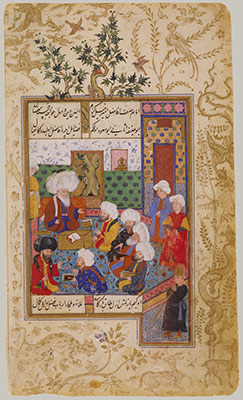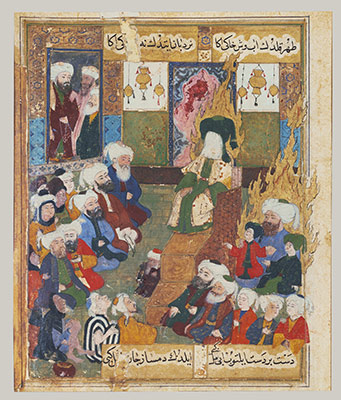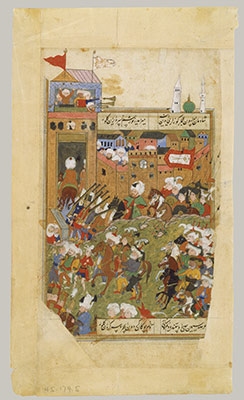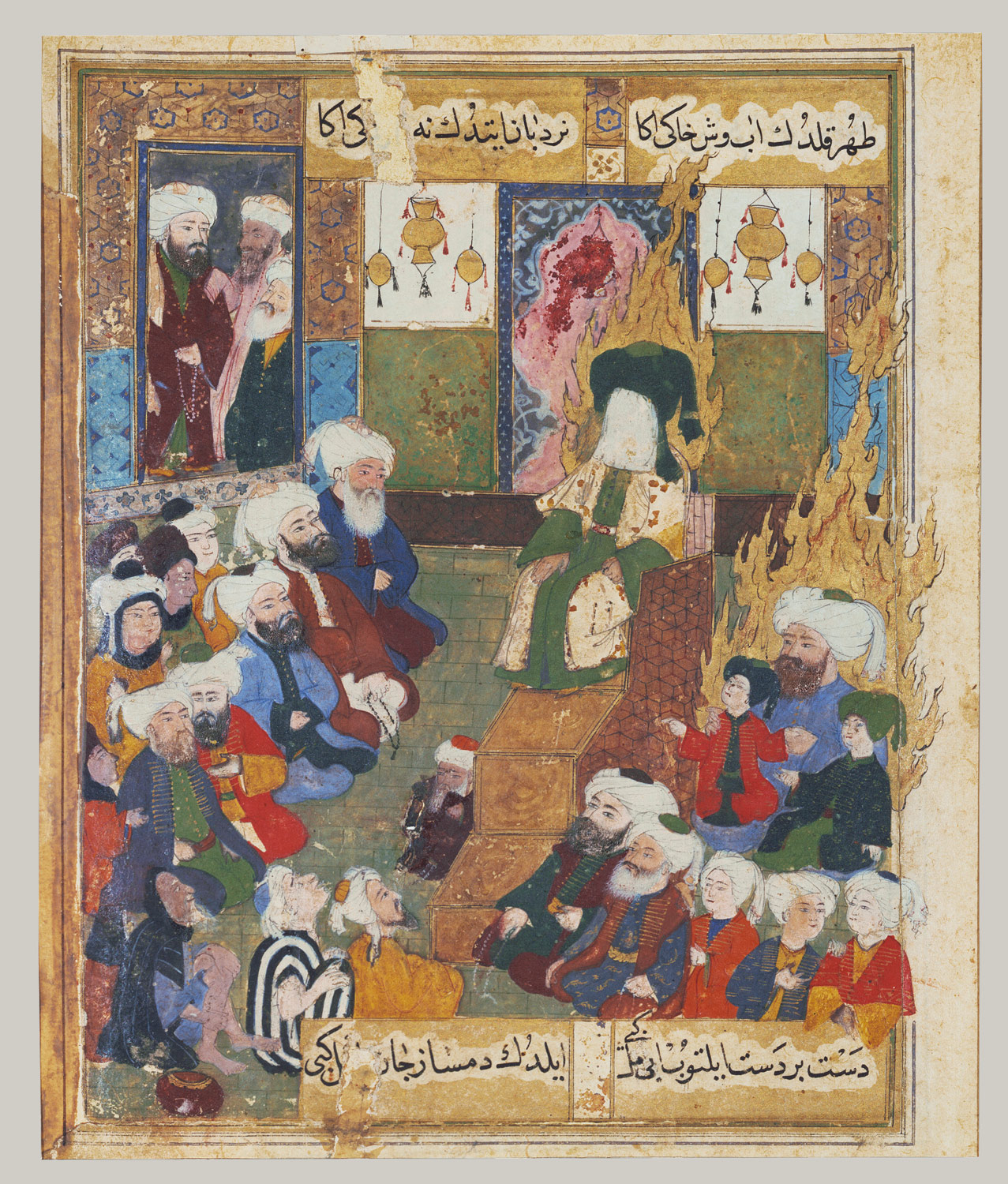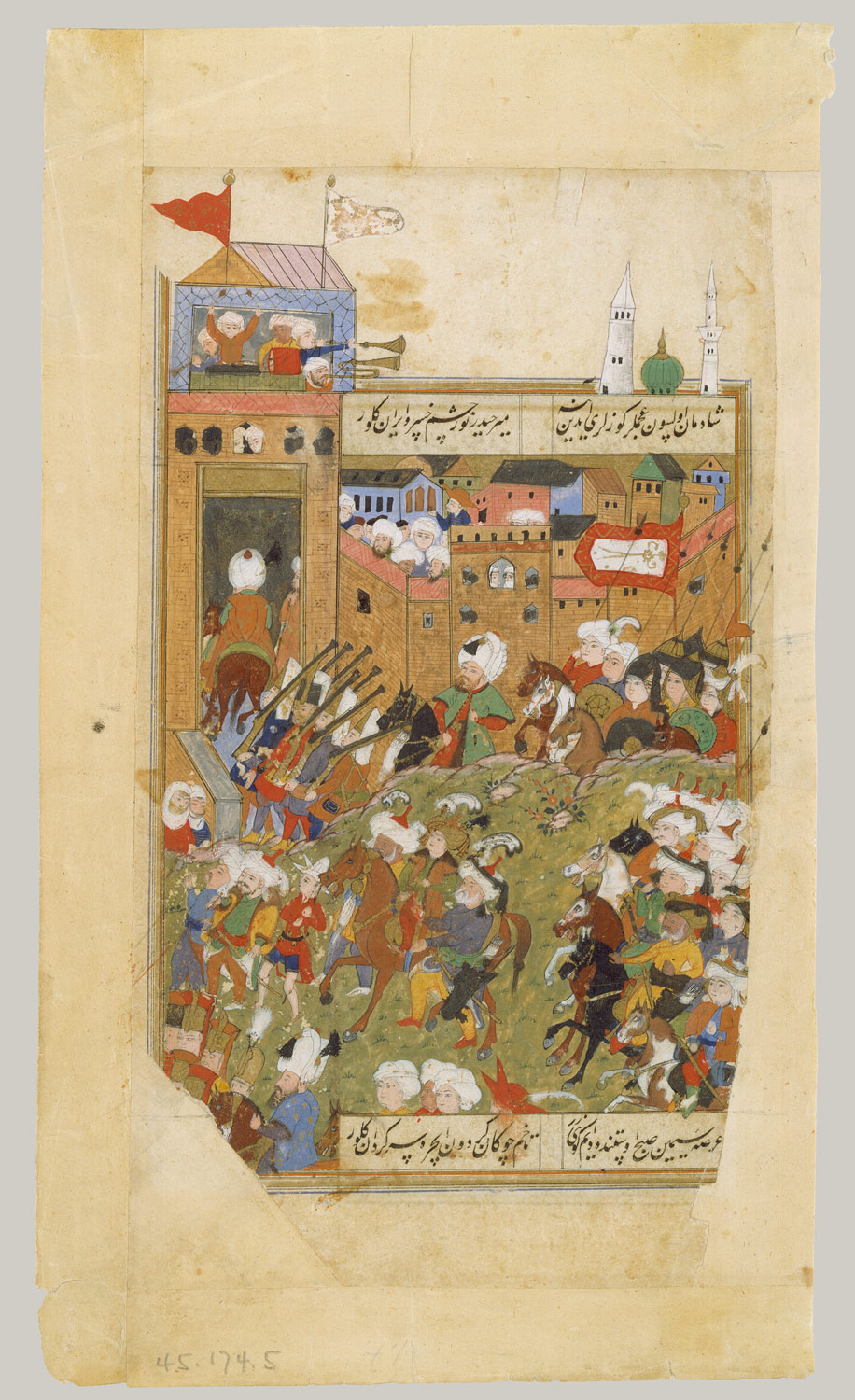In the period from 1400 to 1600 A.D., Iraq is initially under the rule of a series of Turko-Mongol dynasties; then, in the sixteenth century, it becomes part of the Ottoman empire until the twentieth century. Iraq is no longer the geographical center of empires but is incorporated as a province into those centered elsewhere (Iran, Anatolia, or the Balkan Peninsula). This change in status is also reflected in the arts of the period. Baghdad, the former center of manuscript illustration in the Islamic world, only occasionally witnesses a revival of the arts of the book.
Iraq, 1400–1600 A.D.
Timeline
1400 A.D.
1450 A.D.
1450 A.D.
1500 A.D.
1500 A.D.
1550 A.D.
1550 A.D.
1600 A.D.
Overview
Key Events
-
1400–1411
Under the Jalayirid dynasty (1340–1411), a Mongol family that establishes its rule during the collapse of Ilkhanid power, Baghdad is a center for art and culture. Architecture follows earlier local traditions.
-
1401
Timur (Tamerlane; r. 1370–1405), the Turko-Mongolian ruler established in Central Asia, sacks the city of Baghdad.
-
1411–1469
The Qara Quyunlu dynasty (Turk. “Black Sheep”; 1351–1469) controls Iraq. Pir Budaq, governor of Baghdad under his father Jahanshah (r. 1439–67), the most famous Qara Quyunlu ruler, is a noted patron of the arts of the book. Artists invited from different parts of the eastern Islamic world bring together the styles of Tabriz and Shiraz in Iran as well as of Timurid Central Asia. Following the death of Pir Budaq in 1466, Baghdad’s importance as a center of artistic production declines.
-
1469–1508
The Aq Quyunlu dynasty (Turk. “White Sheep”; 1378–1508) ends Qara Quyunlu rule in Iraq. Though the Aq Quyunlu are recognized for their patronage of architecture, metalwork, and the arts of the book, their activities remain outside of Iraq.
-
1508–1534
Under Safavid rule, Iraq looks to Iran for artistic inspiration. Apart from the arts, Baghdad is an important literary center. During this period, interest gathers around the poet Fuzuli (ca. 1480–1556), who writes in Arabic, Persian, and Turkish (all three languages are spoken by the inhabitants of the city at the time). Fuzuli remains active under the Ottomans as well.
-
1534
During the reign of the Ottoman sultan Süleyman “the Magnificent” (r. 1520–66), Iraq is incorporated into the Ottoman empire.
-
1534–1918
Apart from periods of conflict with the Safavids over Shi‘i pilgrimage sites, Iraq is largely under Ottoman rule. The region is significant for international trade, and Baghdad continues to be a center for religious studies and literary activity. The end of the sixteenth century is a time of great creativity in painting and the arts of the book, in which Baghdad once again becomes pivotal. The painting of the period is known as the “Baghdad school” of Ottoman miniature painting.
Citation
“Iraq, 1400–1600 A.D.” In Heilbrunn Timeline of Art History. New York: The Metropolitan Museum of Art, 2000–. http://www.metmuseum.org/toah/ht/?period=08®ion=wam (October 2002)
